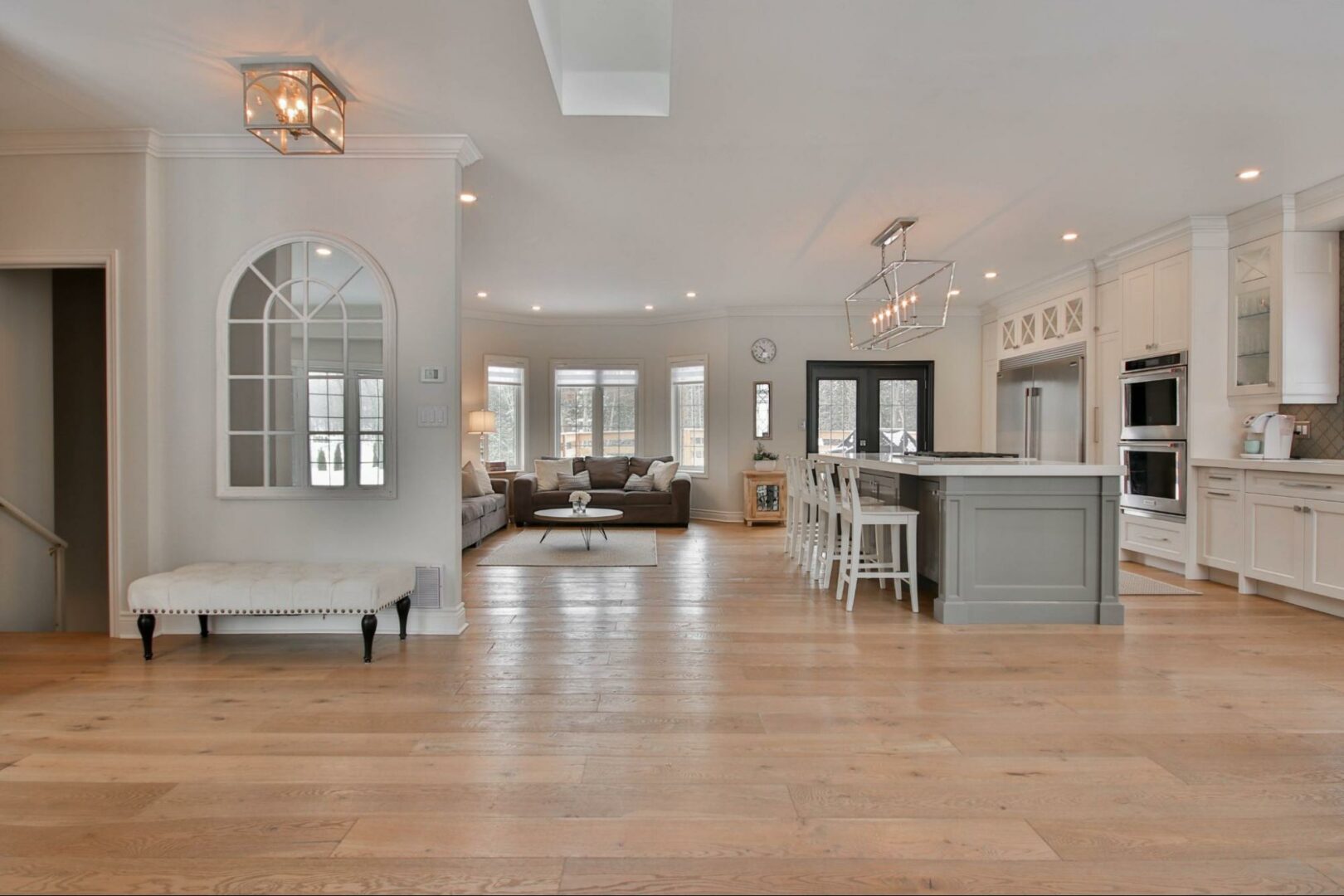Radiant heat flooring is a great investment for any home. It heats a home from the floor up to provide a healthier, more efficient form of heating compared to traditional options, like forced air systems. With radiant heat, cold spots are eliminated, as is the need for bulky equipment like ductwork, heat pumps, and radiators.
So, now that you have radiant heating, what does its maintenance involve?
Understanding the Differences Between Hydronic and Electric Systems
Before looking at the maintenance requirements of radiant floor heating systems, it’s important to understand the difference between the two main types of systems.
Electric radiant heating systems use electrical heating cables as the heat conductor. They do not require any equipment other than the heating components hidden under the floor, and the thermostat that controls them. Electric systems, once installed, require no real maintenance, though you need to understand how to use them properly to ensure they last a long time and work efficiently.
Hydronic systems rely on hot water, heated in a boiler, that travels through flexible tubing to heat the floors. While the boiler takes up floor space, it still isn’t as bulky as the components found in other systems. Hydronic systems require maintenance on top of usage considerations.
Choosing the Right Active Temperature Settings
One of the major benefits of radiant floor heating systems is that they work at lower temperatures than traditional systems. What you set your system at depends on your personal preferences, but generally an ideal active temperature would be between 68º to 72ºF with a floor surface temperature of 75-85°F.
How Long Should You Use the System?
Radiant heating systems can run all day without issue as long as they are well-built, high-quality systems. In fact, running it all day during cold weather is a good idea. With that said, you don’t want to be heating rooms you aren’t using; otherwise, it is a waste of utilities, so focus on the rooms you use during the day so they remain comfortable while you keep the unused spaces off.
How Should the System Be Installed?

With hydronic and electric radiant floor heating, following your system’s installation instructions is vital, as each manufacturer may have different requirements or needs.
Hydronic systems are best installed by a professional in new construction, because they have a complicated installation process. Electric systems have an easier installation process, so confident DIYers can take on the project themselves. However, you need to hire a licensed electrician to make the electrical connections.
What Flooring Material is Best?
Stone and tile are some of the best materials for electric radiant floor heating due to their heat-conductive properties. They heat up quickly and are better at evenly distributing heat into a room. Wood flooring is another excellent option; natural and engineered are the best choices, but it is important to choose thinner, denser woods for optimal performance.
With hydronic radiant heating, materials need to withstand moisture. This also makes stone and tile flooring a good option for these systems.
Where to Use Radiant Heating
Electric radiant heating can go virtually anywhere you want heat. The best locations to install these systems include your main bedrooms, kitchens, bathrooms, basements, offices, and living rooms. You can also install electric radiant heating in your driveway if you live somewhere that gets snow and ice in the winter.
Hydronic radiant heating can also go in many of the same places, including driveways. With driveways, however, heating may be uneven, leaving you with areas of unmelted snow, and the system’s tubing will corrode over time. It is also vital to note that these systems are not ideal for existing homes; they are best for new builds.
When you install hydronic heating in high-moisture areas, like bathrooms and laundry spaces, ensuring proper ventilation is vital. For both types of systems, ensuring proper insulation is necessary to prevent heat loss and to increase the system’s efficiency.
How to Place Furniture Within the Room

With radiant floor heating, your furniture and decor can affect the system’s effectiveness. Furniture that sits directly on the floor will block the electromagnetic waves that help heat up the room, which can result in uneven heating.
Any furniture in the room should have around 2 to 3 inches of ground clearance to avoid this issue. This will allow the electromagnetic waves to move more freely in order to ensure even heat distribution. You also don’t want to install radiant heating under flat or boxed-bottom permanent furniture.
Dog beds and thick rugs can also affect heat distribution. It can also cause discoloration on floor coverings and create hotspots.
Activating the Sensors
Floor sensors are vital to the function of radiant floor heating systems. They help to accurately read the floor’s temperature at any given moment by sending the reading to the thermostat. The thermostat then uses that information to help regulate the system.
These sensors are meant to work automatically but must be positioned and wired correctly. Before you finish the installation project, you also need to test them to ensure they function.
Signs Radiant Floor Heating Needs Attention
There are many signs to watch for that can indicate your radiant floor heating needs attention. While some signs may be specific to the type of radiant heating, some signs can apply to both:
- Cold Spots: If you notice cold spots in areas of your rooms, it is a sign that something in your system isn’t working right. Many issues could cause it. For hydronic systems, it can mean there are air bubbles in the system or the pipes are clogged with debris or sediment.
- Uneven Heating: If your system is heating floors unevenly, it can indicate improper installation. It could also indicate air bubbles in the pipes or malfunctioning zone valves for hydronic systems.
- Circuit Breaker is Tripping: If your circuit breaker is tripping, it could be a sign that there isn’t enough electrical power for your system or there is faulty wiring.
- Overloaded Circuit: Another common circuit issue with electric radiant heating are frequent power failures and malfunctioning appliances. This can signal that your circuit is overloaded and needs to be upgraded.
- High Energy Bills: If your energy bills suddenly increase, it can mean you have heat loss, your system isn’t operating correctly, or there is an issue with your thermostat.
- Noises: Gurgling or banging noises from a hydronic system can indicate trapped air or water flow issues.
With Proper Maintenance, a Radiant Heating System Will Last a Lifetime
When you’re looking for an efficient heating system, radiant heating is a great option that provides effective, energy-efficient heating. Radiant heating can last for decades—with proper installation and maintenance. So, the better you understand your system, the easier its maintenance becomes to ensure it always provides the best heating possible.
Contact Warmup today to learn more about our electric radiant heating and how to keep your system at peak performance.
Want to see Warmup products in action? Visit the Warmup YouTube Channel!




![Thumbnail [200x250]](/wp-content/uploads/Indoor-Systems-Page-Image.png)
![Thumbnail [200x250]](/wp-content/uploads/image-13.png)
![Thumbnail [200x250]](/wp-content/uploads/Projects-Image.png)